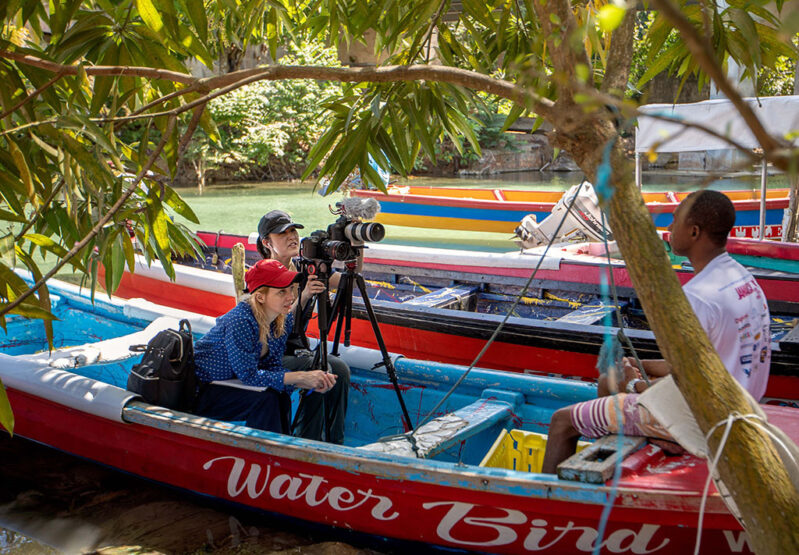In a company-wide collaboration, AP launches an in-depth series exploring heroic efforts worldwide to heal the planet.
Is that seaweed in my hair?
The first installment of “What Can Be Saved?” – a ground-breaking new series from The Associated Press – was so deeply immersive that viewers could almost smell the sea-salt of Jamaica. The island nation was the first stop in what will be 12 installments reported from five continents focusing not on the well-documented gloom of climate change, but on often unsung people around the world who are combating environmental destruction in big ways and small.

Health and science staffers, Washington-based environment reporter Christina Larson, left, and New York video journalist Kathy Young, interview a fisherman in White River, Jamaica, Feb. 11, 2019.
AP Photo / David Goldman
From Jamaica, the AP reporting team of photographers David Goldman and David Phillip, science writer Christina Larson and video journalist Kathy Young came back with the astounding narrative of underwater nurseries where islanders are growing coral by hand, branch by branch on underwater lines, to reverse decades of destruction to Jamaican reefs. The team’s work wins Best of the Week honors.
As Larson’s vibrant story captured, the Sisyphean task of coral farming is akin to planting a field one blade of grass at a time, and the visuals of divers tending their coral gardens in limpid waters and drone shots showing blue, blue waters with the reefs underneath were simply knockout.
The next trick was making sure that AP’s global audience and clients would be equally wowed. Presentation was key in unlocking the full impact of the reporting. Breaking new ground in AP storytelling, the “What Can Be Saved?” team worked with colleagues at AP News to help usher in a series of upgrades to AP’s platform, such as full-bleed photos and the ability to embed looped videos, that will serve future projects down the line. Also featured in the presentation were explainer videos, illustrated and animated by Peter Hamlin of the global enterprise team.
Additional features are already in the pipeline: A story from the Amazon, for example, eventually should be able to feature sounds of the rainforest’s teeming wildlife.

Houston-based staff photographer David J. Phillip scuba dives while photographing divers planting coral on a reef in Ocho Rios, Jamaica, Feb. 12, 2019.
AP Photo / David Goldman
Teamwork between 10 AP departments that worked on the series was essential in pulling together all the pieces of “What Can Be Saved?” into a seamless product that AP clients can use in whole or in part.
With 10 more episodes still to come, the project is already resonating in the United States and internationally, hooking global attention. All the stories and online video cuts are being translated into Spanish, and a customer in China is translating the videos into Chinese. Jamaica’s Prime Minister Andrew Holness shared the first installment with his followers on Instagram and Twitter.
For their thoughtful, painstaking and visually stunning reporting that launched a mammoth team effort to approach the climate-emergency story with fresh eyes and tell it in compelling new ways, Goldman, Phillip, Larson and Young win AP’s Best of the Week honors.



























